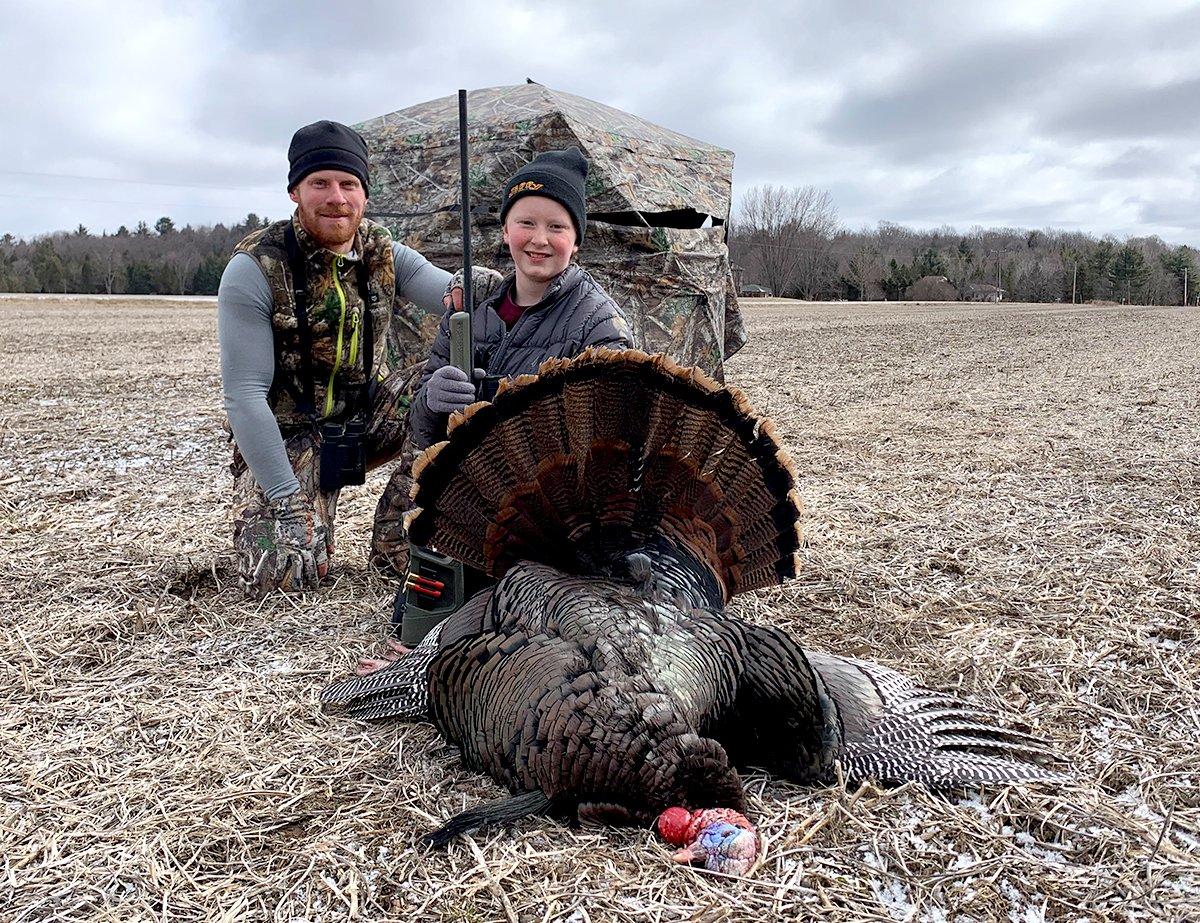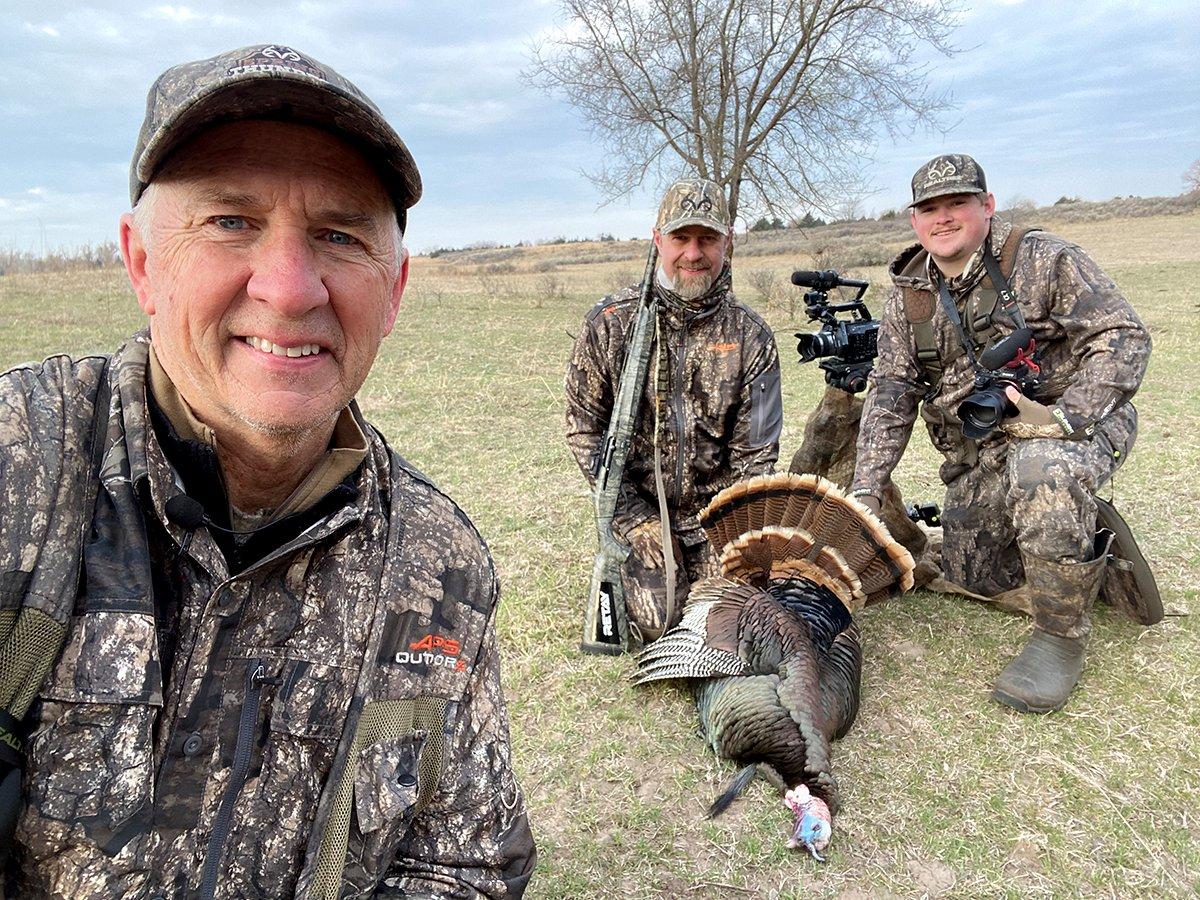Gobblers are responding to calls and whipping decoys despite winter weather that won't let go
I mentored two boys during Wisconsin's youth hunt last Saturday. While I expected the wintery, blustery conditions would stifle gobbling and strutting, they didn't at all. Both toms the boys bagged gave us the full show. The first one, roosted alone more than 650 yards away across a paved road, heard my loud calling and came on a string, gobbling and strutting his way through blowing snow. My 8-year-old mentee hammered him with a .410 just before he pounced on the jake decoy. We stashed the gobbler in our blind, and then my nephew was up to bat.
(Don't Miss: The Box Call Is the Deadliest Turkey Yelper You're Not Using)
Both boys got cold, so we quickly warmed up at my place, then headed back out. Another tom was already out in the same field the other bird had come from, across a paved road. We got the blind between us and the bird, snuck through the door, and then I belly-crawled 10 yards out to set up decoys. That gobbler, too, came on a string to my calling, strutting and gobbling the entire way. The 26-pound thumper attacked my jake decoy before my nephew leveled him.
Out in Kansas at JB Outfitters, Realtree's David Blanton met longtime friend Tony Hale, of Idaho, who'd never taken a Rio Grande gobbler. Monday afternoon, I did some long-distance scouting around cut cornfields, Blanton said. I saw one gobbler strutting with three hens, and they headed toward a roosting area. The following morning, winds were high, but we finally heard him gobbling about 400 yards away, he continued. Once the birds flew down, one hen broke away, but the gobbler was strutting really hard for the remaining two hens. We called those two hens right to our hen and jake decoys. It looked like the tom was going to skirt around the decoys, but he suddenly turned and came right in. He knocked over the jake decoy, then Tony killed him.
Watch for Hale's hunt on an upcoming episode of Spring Thunder.
My sister, Clair Marshall, picked out a gobbler from a 15- to 20-bird flock last Saturday in South Dakota. During the morning hunt, she called one of the three toms in the flock to within easy range, but he was unable to see the decoys and didn't present an open shot. She returned that afternoon and set up near the roost. As the flock approached, two toms poked over a hill and instantly came to her hen decoy. She claimed her first tom of spring 2022. For her, the birds were very receptive to calling and decoys.
Over most of the northern U.S. and Great Plains, temperatures will finally be rising toward the end of this week. However, winds will continue across most of the region, especially on the Eastern Plains in Colorado and surrounding areas. Also, we can expect rain and thunderstorms mixed in across most of the area, too. But the crummy weather has had little bearing on the birds' responsiveness to calling and decoys so far, so I suspect gobblers will continue working just fine.
(Don't Miss: How to Turkey Hunt the Worst Weather Possible)
Last week I'd observed a lot of sporadic movements, but it seems that turkeys are now using common areas and are more predictable from day to day. This week, I'll be bowhunting over jake and hen decoys on my Wisconsin time-period A license, and calling loudly in the windy conditions. Based on my personal observations and recent conversations with other turkey troops, I believe those ploys will deliver in the days ahead.










